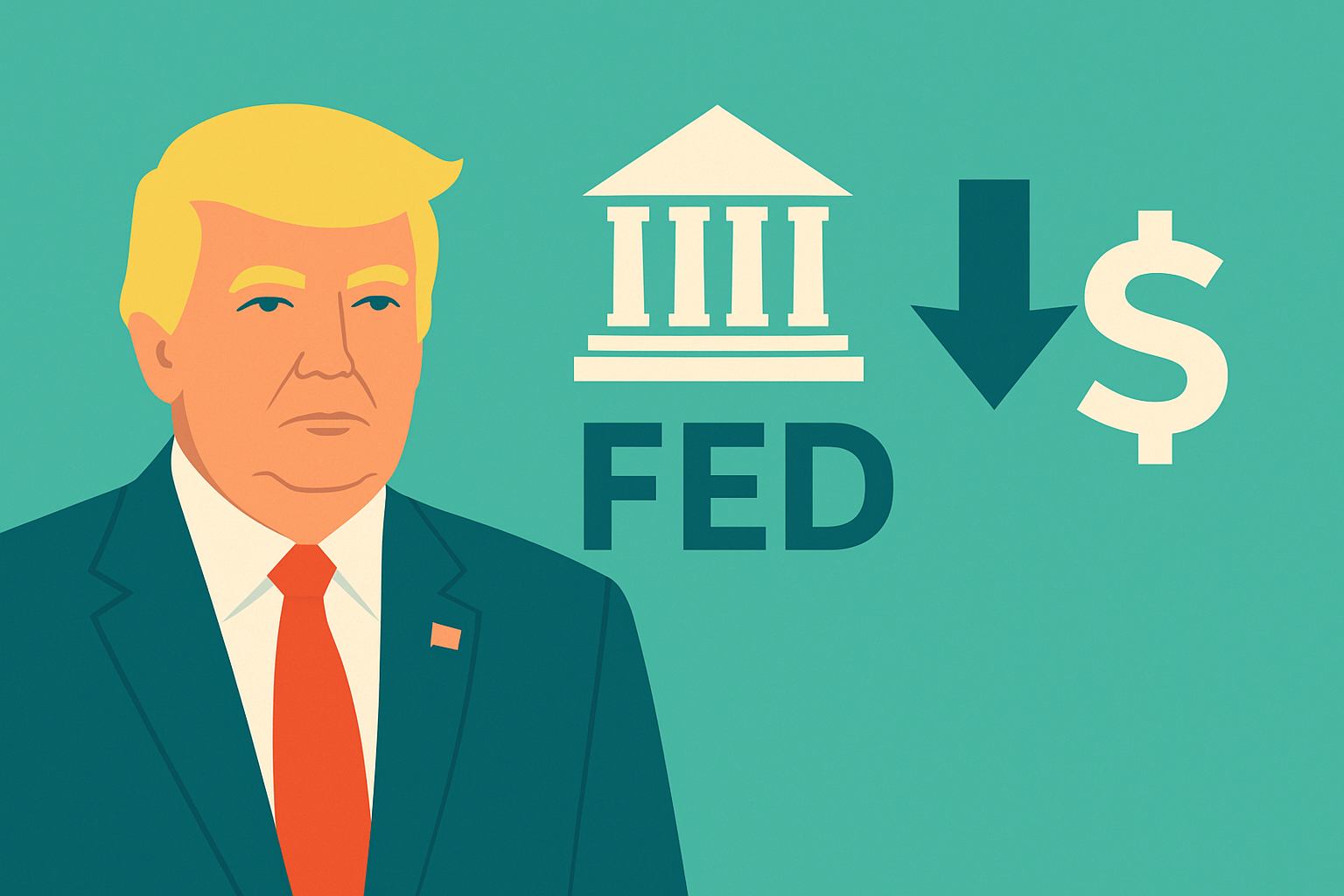— Central Bank Independence at Risk in an Inflationary Environment —
1. Executive Summary
President Donald Trump has renewed pressure on the Federal Reserve to significantly cut interest rates. While he cites economic support for households and reduced debt servicing costs, prominent economists are raising red flags. This report examines Trump’s motivations, analyzes the macroeconomic implications of politically driven monetary policy, and highlights the risks of undermining central bank independence.
2. Trump’s Motivations for Demanding Rate Cuts
a. Reducing National Debt Servicing Costs
Trump argues that the U.S. federal debt—now exceeding $35 trillion—demands lower interest rates to prevent ballooning interest payments. He has floated a 1% policy rate as a target.
b. Easing the Housing Burden
Citing the burden of high mortgage rates on American families, Trump has framed the rate cut as a measure to boost housing affordability and stimulate construction.
c. Pre-empting Economic Slowdown
He warns that without swift Fed action, the economy risks stagnation or contraction in late 2025, referencing weakening labor market indicators and flat consumer sentiment.
d. Political Strategy and Public Pressure
Trump has directly visited the Federal Reserve’s headquarters and publicly attacked Chair Jerome Powell, labeling him “incompetent” and “a disaster.” This represents a symbolic assertion of political dominance over an institution historically independent from partisan influence.
3. Economists’ Warnings: Risks of Politicized Monetary Policy
a. Erosion of Central Bank Credibility
Former Fed Chairs Ben Bernanke and Janet Yellen have emphasized the dangers of political interference in monetary policy. Once investors suspect that rates are being manipulated for political ends, inflation expectations and bond yields may spike.
b. Inflation and Market Backlash
Economists at the Brookings Institution, WSJ, and the Federal Reserve Bank of St. Louis note that premature rate cuts may reignite inflation, particularly in the context of Trump’s protectionist tariffs and expansionary fiscal proposals.
c. Risk of Stagflation
With cost-push inflation looming due to trade tensions and supply-side constraints, a hasty rate cut could lead to stagnation + inflation—echoing the stagflationary crisis of the 1970s.
d. Historical Parallels and Institutional Risk
Analysts draw comparisons to Richard Nixon’s pressure on then-Fed Chair Arthur Burns, which contributed to the inflationary spiral of the 1970s. The lesson: political dominance over monetary policy leads to long-term economic instability.
4. Analytical Summary (Tabular Overview)
| Aspect | Trump’s Position | Economists’ Warning |
|---|---|---|
| Debt Management | Cut rates to ease fiscal burden | Could worsen inflation & bond market volatility |
| Housing | Boost affordability via lower mortgages | May inflate asset bubbles |
| Growth | Prevent recession via stimulus | Overheating risk amid tariffs and deficits |
| Institutional Role | Publicly pressures Fed | Undermines credibility and independence |
| Historical Analogy | Assertive leadership | Nixon-era mistakes repeatable |
5. Policy Implications
- Short-term impact: Markets may rally temporarily on dovish expectations.
- Medium-term risks: Bond yields may rise, USD may weaken, and inflation risk may rise.
- Long-term danger: Institutional degradation of the Fed’s independence may compromise its ability to control future crises.
6. Conclusion
While President Trump frames rate cuts as economically rational and pro-growth, the broader macroeconomic and institutional consequences may be severe. Central bank independence is a foundational pillar of U.S. economic credibility. Undermining that pillar in pursuit of short-term political gain could destabilize financial markets, reignite inflation, and weaken U.S. leadership in global finance.
A prudent path forward involves respecting data-dependent policymaking and insulating monetary authorities from electoral agendas.


